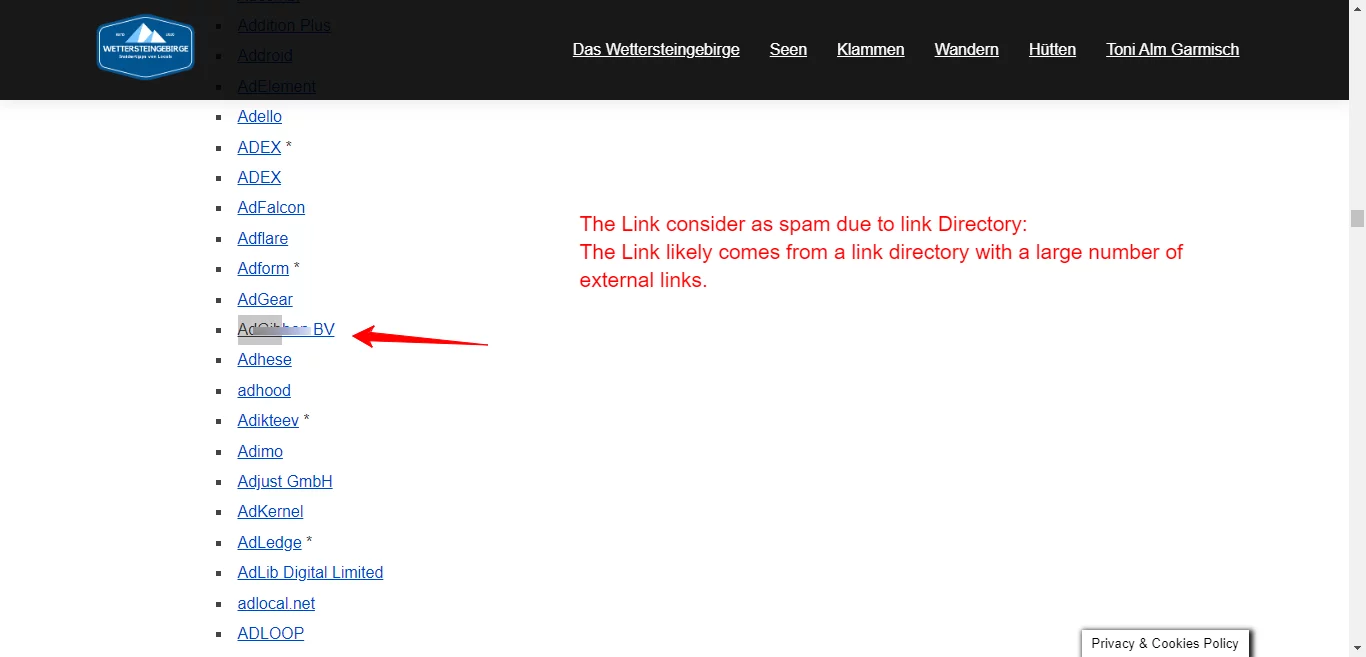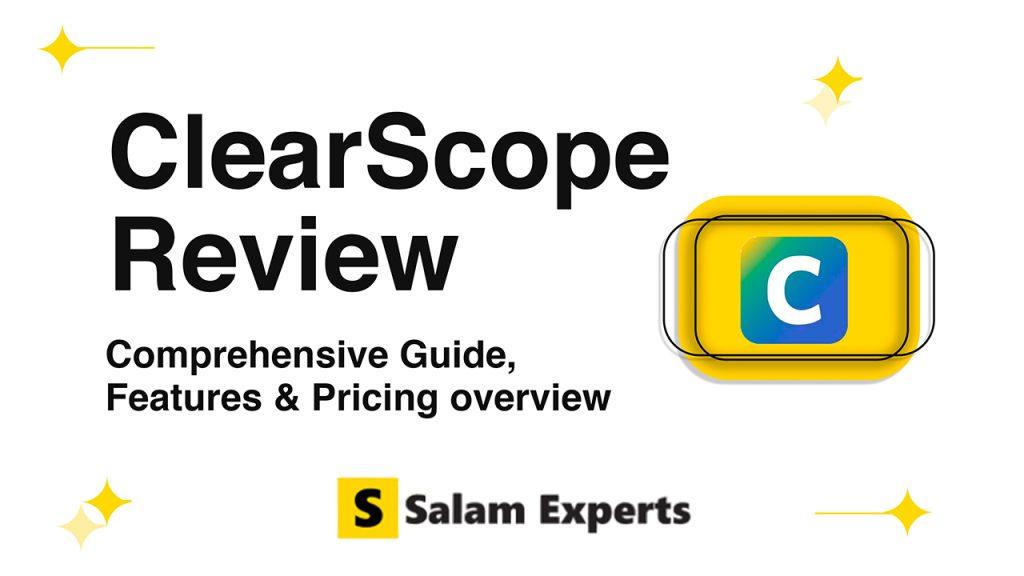Toxic Backlinks: How They Harm Your Website’s SEO

Toxic backlinks are inbound links to your website that are harmful to your search engine optimization (SEO) efforts. These links come from spammy or low-quality websites that violate Google’s guidelines. Toxic backlinks can harm your website’s visibility in search engine results pages (SERPs) and can hurt your SEO performance.
Keynotes:
- Toxic backlinks come from spammy or low-quality websites and can harm your website’s SEO.
- Backlinks are important for SEO, but not all backlinks are created equal.
- Understanding toxic backlinks and how to remediate them is crucial for improving your website’s SEO performance.
There are Different Types of Links:
- Internal Links: Internal links are links that point to other pages within your website.
- External Links: External links are links that point to other websites.
- Backlinks: Backlinks are important for SEO, but not all backlinks are created equal. Toxic backlinks can harm your website’s SEO and should be removed.
Understanding toxic backlinks is crucial for any website owner or SEO specialist. In this article, we will discuss the impact of toxic backlinks on your website’s SEO, as well as remediation strategies to get rid of them. We will also answer some frequently asked questions about toxic backlinks.
What are the types of links?
When it comes to links, various types can impact your website’s search engine rankings. Here are some of the most common link types:
Natural Links
Natural links are links that are created organically, without any manipulation or incentivization. They are the most valuable type of link, as they are a sign of high-quality content that people want to link to.
Editorial Links
Editorial links are links that are placed within the content of a website by the website’s owner or editor. They are typically earned through high-quality content or relationships with the website owner.
Guest Post Links
Guest post links are links that are included within a guest post on another website. They are a popular link building tactic, but it’s important to ensure that the guest post and the link are both high-quality and relevant to your website.
Forum Links
Forum links are links that are included within forum posts or forum signatures. They are often low-quality and spammy, so it’s important to avoid them.
Directory Links
Directory links are links that are included within online directories. While some directories can be valuable for local SEO, most are low-quality and should be avoided.

Paid Links
Paid links are links that are purchased from other websites. They are against Google’s guidelines and can result in penalties or a loss of search engine rankings.
Link Exchanges
Link exchanges are links that are exchanged between two websites. They are against Google’s guidelines and can result in penalties or a loss of search engine rankings.
Overall, it’s important to focus on earning high-quality, natural links rather than using manipulative tactics. By creating valuable content and building relationships with other website owners, you can earn links that will improve your search engine rankings and drive traffic to your website.
Understanding Toxic Backlinks
Definition and Significance
As a website owner, it is essential to understand what toxic backlinks are and how they can negatively impact your website’s search engine rankings. Toxic backlinks are inbound links that originate from low-quality or spammy websites, and they can harm your website’s reputation by reducing its organic placement.
Toxic backlinks are considered harmful because they violate Google’s link spam guidelines. Google penalizes websites that have toxic backlinks by reducing their search engine rankings. In severe cases, Google may even remove a website from its search results. Therefore, it is crucial to identify and remove toxic backlinks from your website.
Identifying Toxic Backlinks
Identifying toxic backlinks is an essential step in removing them. There are several tools available that can help you identify toxic backlinks. Google Search Console is one such tool that provides a list of all the inbound links to your website. You can use this list to identify toxic backlinks by looking for links from low-quality or spammy websites.
Another way to identify toxic backlinks is to use third-party tools like SEMrush or Ahrefs. These tools provide detailed reports of your website’s backlink profile, including the quality of the links. You can use these reports to identify toxic backlinks and take steps to remove them.

Common Sources of Toxic Backlinks
Toxic backlinks can come from various sources, including link farms, paid link schemes, and spammy websites. Link farms are websites that exist solely to provide links to other websites. Paid link schemes involve paying for links to your website, which violates Google’s guidelines. Spammy websites are those that have low-quality content and are designed to manipulate search engine rankings.
In conclusion, toxic backlinks can harm your website’s search engine rankings and reputation. It is essential to identify and remove toxic backlinks from your website to ensure that it remains in good standing with search engines. By using the right tools and following best practices, you can keep your website’s backlink profile clean and free of toxic links.
Impact of Toxic Backlinks
Toxic backlinks can have a severe impact on a website’s search engine optimization (SEO) and overall online presence. Here are some of the ways toxic backlinks can affect a website:
SEO Penalties and Ranking Drops
Toxic backlinks can lead to SEO penalties and ranking drops. When a website has too many toxic backlinks, search engines like Google may penalize it for violating their guidelines. This can result in a significant drop in the website’s search engine rankings, making it harder for users to find the site.
Brand Reputation Damage
Toxic backlinks can also damage a website’s brand reputation. If a website has backlinks from low-quality or spammy websites, it can make it appear less trustworthy and authoritative to users. This can lead to a decrease in traffic and potential customers. Additionally, if a website is associated with harmful or illegal websites, it can be blacklisted by search engines, which can be difficult to recover from.
Overall, it’s essential to monitor a website’s backlinks regularly and identify and remove any toxic backlinks to avoid these negative impacts. By keeping a clean backlink profile, we can ensure that our website is optimized for search engines and maintains a positive online reputation.
Remediation Strategies
When dealing with toxic backlinks, there are several remediation strategies that we can use to remove them and avoid penalties from search engines.
Backlink Audit Process
The first step in identifying and removing toxic backlinks is to conduct a thorough backlink audit. This process involves using tools like Ahrefs, SEMrush, or Moz to analyze the quality of each backlink. We need to look for links that come from low-quality or spammy websites, irrelevant sources, or those that use manipulative anchor text.
Disavowing Toxic Links
Once we’ve identified the toxic backlinks, the next step is to disavow them. This process involves submitting a list of links to Google’s Disavow Tool, which tells the search engine to ignore them when calculating our website’s ranking.
It’s important to note that we should only disavow links that we are certain are toxic. Disavowing high-quality links could harm our website’s ranking and visibility.
Recovery from Penalties
If our website has already been penalized due to toxic backlinks, we need to take immediate action to recover from the penalty. The first step is to identify the type of penalty we’re facing, whether it’s a manual or algorithmic penalty.
If it’s a manual penalty, we need to submit a reconsideration request to Google, explaining the actions we’ve taken to remove the toxic backlinks and prevent future violations. If it’s an algorithmic penalty, we need to continue removing toxic backlinks and wait for the next algorithm update to see if our website’s ranking improves.
Conclusion:
Remediation strategies are essential when dealing with toxic backlinks. By conducting a backlink audit, disavowing toxic links, and recovering from penalties, we can ensure that our website’s ranking and visibility remain strong and sustainable.
FAQs
Identifying toxic backlinks can be a daunting task, but it’s crucial for maintaining a healthy website. Some signs of toxic backlinks include a sudden drop in website traffic, a decrease in organic search rankings, and a high number of low-quality backlinks. To identify toxic backlinks, we recommend using a backlink analysis tool that can provide a comprehensive report of your website’s backlink profile.
If you’ve identified toxic backlinks, the next step is to disavow them. Disavowing backlinks involves telling Google to ignore certain links that you believe are harmful to your website’s SEO. To disavow backlinks, we recommend using the Google Disavow Tool. However, before disavowing any backlinks, it’s important to try and remove them manually by contacting the webmasters of the linking sites.
Yes, there are free tools available that can help you detect toxic backlinks. Some of the best free backlink analysis tools include SEMrush, Ahrefs, and Moz. However, keep in mind that the free versions of these tools may have limitations compared to their paid versions.
Backlinks that are considered toxic for SEO purposes are those that violate Google’s Webmaster Guidelines. These include links from spammy or low-quality websites, links from websites with irrelevant content, and links with over-optimized anchor text. Additionally, links from websites that engage in link schemes or paid links are also considered toxic.
The Google Disavow Tool allows website owners to tell Google which backlinks they want to disavow. By disavowing unwanted backlinks, you can prevent them from negatively impacting your website’s SEO. However, it’s important to use the Disavow Tool carefully and only disavow links that you believe are harmful to your website’s SEO.
To maintain site health, SEO professionals should avoid backlinks from spammy or low-quality websites, links with over-optimized anchor text, and links from websites with irrelevant content. Additionally, links from websites that engage in link schemes or paid links should also be avoided. It’s important to focus on building high-quality, relevant backlinks from authoritative websites to improve your website’s SEO.

Author
-

I'm the founder of Salam Experts. Passionate about SEO & web design. I help businesses like yours get found online at Salam Experts.
View all posts




